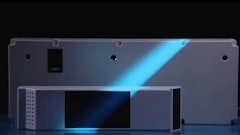Despite the skepticism and reluctance of some to acknowledge that RFID will change the way the food industry does business, it is clear that applications of the technology are steadily continuing to grow and those who embraced it early on will have the advantage.
Late in July, AMR Research, Boston, published findings of a survey of 500 companies regarding their RFID plans, and while the AMR experts said “mainstream adoption” will not happen until 2008 at the earliest, the study shows there is steady, inexorable progress.
According to the study’s respondents, RFID spending will grow 16 percent in 2006 over this year’s levels, and then by another 20 percent from 2006 to 2007, with the average expenditures per organization steadily increasing from today’s $550,000 to $640,000 next year and $770,000 in 2007. Some 69 percent of respondents said they are planning to evaluate, pilot or implement RFID in 2005.
- The report identified several key issues facing the RFID market:
- The opportunity for market technology leadership is wide open, with no single vendor establishing an early leadership position.
- The overwhelming majority of respondents cited significant challenges finding the return on investment (ROI) to justify their RFID spending. ROI was identified by 28 percent as their biggest budget obstacle regarding RFID adoption.
- A lack of standards maturity continues to be a key factor, particularly for process manufacturers. Only 29 percent said the standards have reached an appropriate level of maturity.
“RFID is still in its formative years,” says Dennis Gaughan, research director, AMR Research. “The market will be hotly contested across all technology segments from tags and readers through middleware and enterprise applications.”
Last month, the Global Commerce Initiative (GCI) released a study which addresses many of the core questions and issues involved with RFID adoption in food. The study, “A Shared Vision for Trans-forming Business Processes,” was sponsored by the Food Marketing Institute (FMI), Grocery Manufacturers Association and other industry groups in the United States and abroad.
Several of the key issues addressed by the research include:
- What near- and medium-term benefits can be expected from EPC adoption?
- What changes in business practices will trading partners need to implement both internally and in cooperation with each other to achieve expected benefits?
- What factors will accelerate EPC implementation? What about cost? What about technology?
- What actions should individual companies be taking regarding collaborating with trading partners and to address issues involving technology and standards to encourage EPC implementation?
“It is clear that the early adopters, such as Wal-Mart, Albertson’s Tesco, Target, Metro, Procter & Gamble, Gillette, Johnson & Johnson, Kraft, and others, are moving ahead with their initiatives and are achieving benefits,” says Pat Walsh, director of industry relations at FMI, and the lead senior staff member in that organization on the RFID front.
“Certainly, there are challenges regarding how the technology performs, such as read rates and accuracy, as well as continued questions about the cost and ROI,” Walsh says. “But it is also clear that for many products—particularly those with higher retail price tags and those that are high-theft, high-volume items—the technology is proving to be beneficial.”
One of the objectives of the study is to determine what steps need to be taken in order to encourage others in the industry to become more involved with the initiative, which shows no signs of subsiding. Many companies are still skeptical—both about the technology itself and the costs associated with it, and are still waiting to be convinced.
“Two years ago when this all started, there was a tremendous amount of hype,” Walsh says. “Now the tough work is happening, with pilots and companies trying to determine just how this should work. We’re beyond hype. Companies are realistic and are asking the tough questions. They’re looking for answers.”
Those answers are not easy to come by, but the work released by GCI is a significant contribution to the growing body of knowledge that is available to the industry, and should help companies still on the cusp make their decisions.
The fact is, many experts say, implementing RFID/EPC technology within a given enterprise is not an easy process. There is no out-of-the-box technology available yet; each company’s needs are unique and often solutions are complex.
Still, when major suppliers, ranging from Wal-Mart and other big-box retailers to the U.S. Department of Defense, make the inclusion of RFID tags on cases and pallets shipped to their distribution centers a requirement for doing business with them, and they stick by their requirements, that is pretty strong stuff. That’s true, in fact, both for suppliers who must comply with these mandates to retain that critical portion of their business, and for competitors who must constantly fight to find ways to increase their own long-term efficiency if they are to survive.
And there appears to be no give on that score.
For a copy of the “A Shared Vision for Transforming Business Processes” study, go to FMI's Web site at www.fmi.org/technology/GCI_IBM_EPC_report.pdf.















